The African savannah, with its sweeping grasslands and scattered acacia trees, provides a unique habitat for some of the world’s most fascinating avian species. These vast ecosystems, stretching across much of sub-Saharan Africa, host a remarkable diversity of birdlife that has evolved specialized adaptations to thrive in this challenging environment. From massive flightless runners to tiny insect-hunters, savannah birds showcase an extraordinary variety in form, function, and behavior. Their vibrant plumage, distinctive calls, and remarkable survival strategies have made them symbols of Africa’s wild places. In this exploration of the savannah’s most iconic birds, we’ll discover species that have captured the imagination of wildlife enthusiasts worldwide and play crucial roles in maintaining the health of these grassland ecosystems.
The Magnificent Secretary Bird
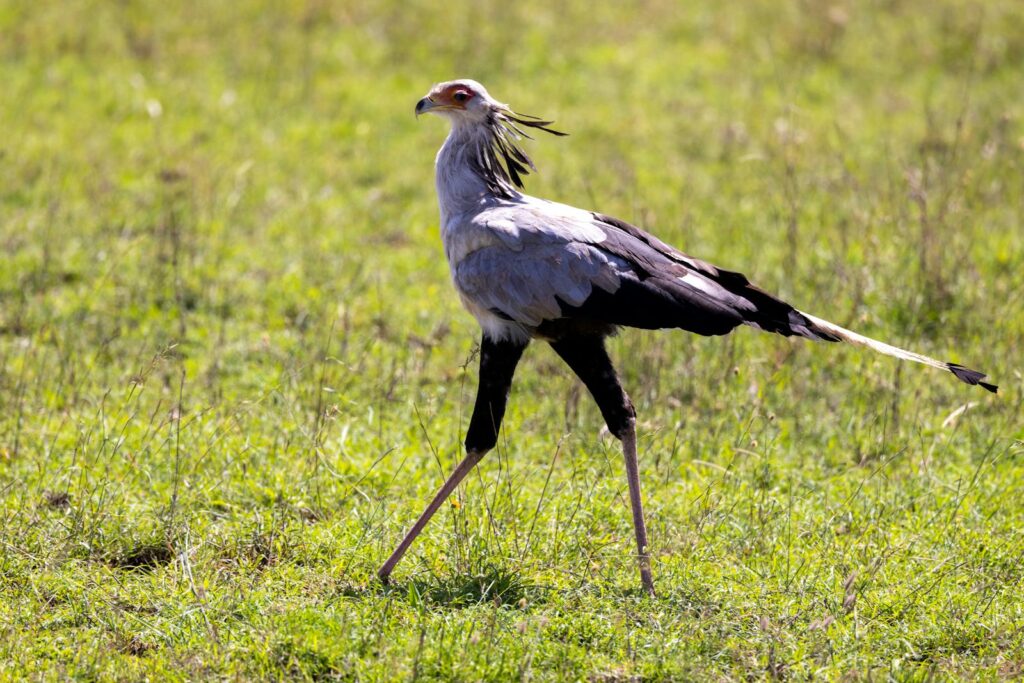
The Secretary Bird (Sagittarius serpentarius) stands as one of Africa’s most distinctive avian species, with its eagle-like body perched atop crane-like legs that can reach heights of up to 4 feet. Named either for the quill-like crest of feathers that resemble the pens 19th-century secretaries tucked behind their ears or for the Arabic “saqr-et-tair” meaning “hunter bird,” these majestic creatures command attention wherever they stride across the savannah. Their unique hunting method involves stomping prey with powerful, precise kicks that can deliver up to 5 times their body weight in force—enough to kill venomous snakes, which form a significant part of their diet. Secretary birds mate for life and build large platform nests in acacia trees, where they raise their young with dedicated parental care that can last several months.
The Ostrich: Africa’s Feathered Giant
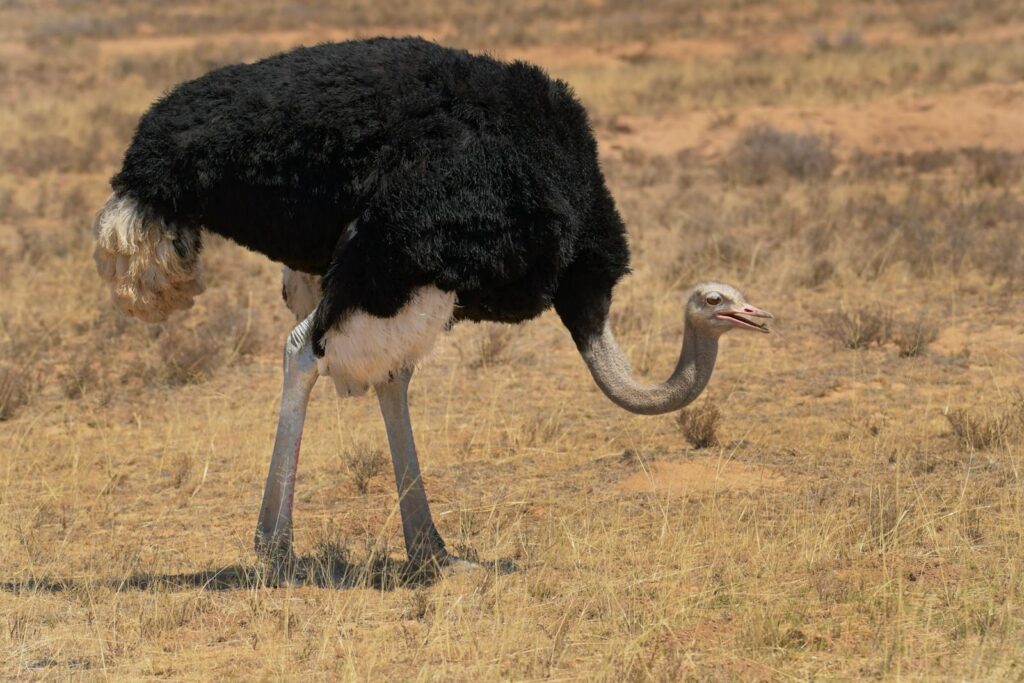
The ostrich (Struthio camelus) reigns as the largest living bird species, with males standing up to 9 feet tall and weighing as much as 330 pounds. These flightless giants compensate for their inability to take to the skies with remarkable running abilities, reaching speeds of up to 45 miles per hour with strides that can cover 10-16 feet in a single bound. Their distinctive black and white plumage (in males) serves multiple purposes, including heat regulation in the harsh savannah climate and elaborate courtship displays to attract females. Ostrich eggs, weighing approximately 3 pounds each and equivalent to about 24 chicken eggs, represent the largest eggs of any living bird species and are incubated primarily by the female with some assistance from the dominant male in their complex social structure.
The Kori Bustard’s Impressive Display
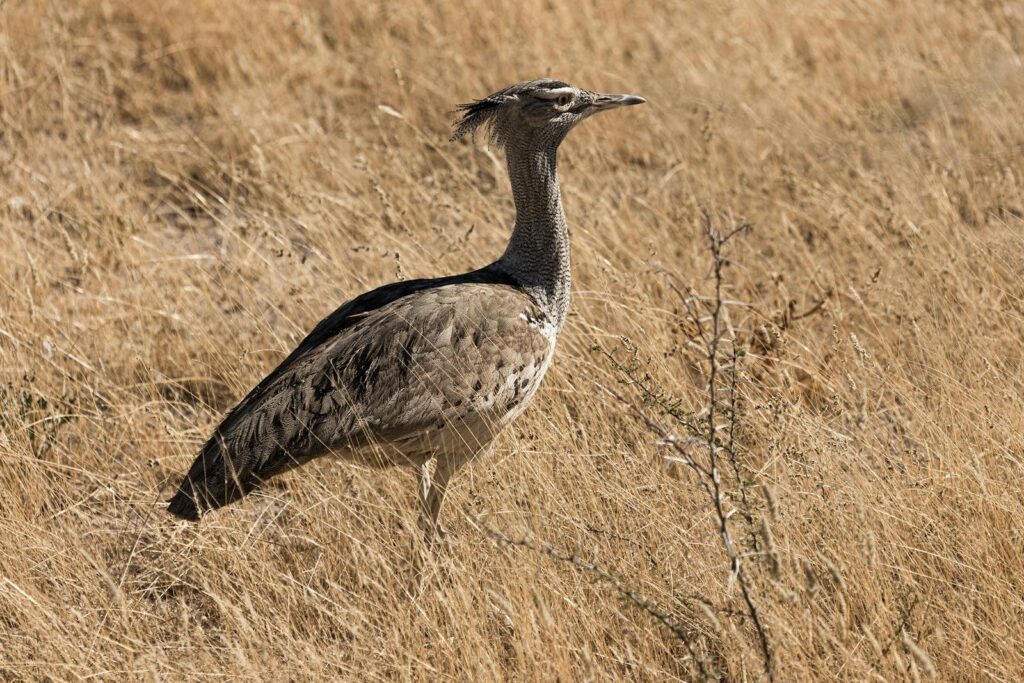
The Kori Bustard (Ardeotis kori) holds the distinction of being the heaviest flying bird native to Africa, with males sometimes exceeding 40 pounds—approaching the theoretical limit for flight capability. During elaborate courtship displays, males inflate their necks to three or four times their normal size, creating an impressive white balloon-like structure visible from great distances across the savannah. These predominantly terrestrial birds spend most of their time walking methodically through grasslands in search of a varied diet that includes insects, lizards, small mammals, and plant material. Despite their considerable weight, Kori Bustards can fly when necessary, particularly to escape predators or to reach evening roosting sites, though they prefer to walk when possible to conserve energy in their challenging habitat.
The Social Weavers and Their Architectural Marvels
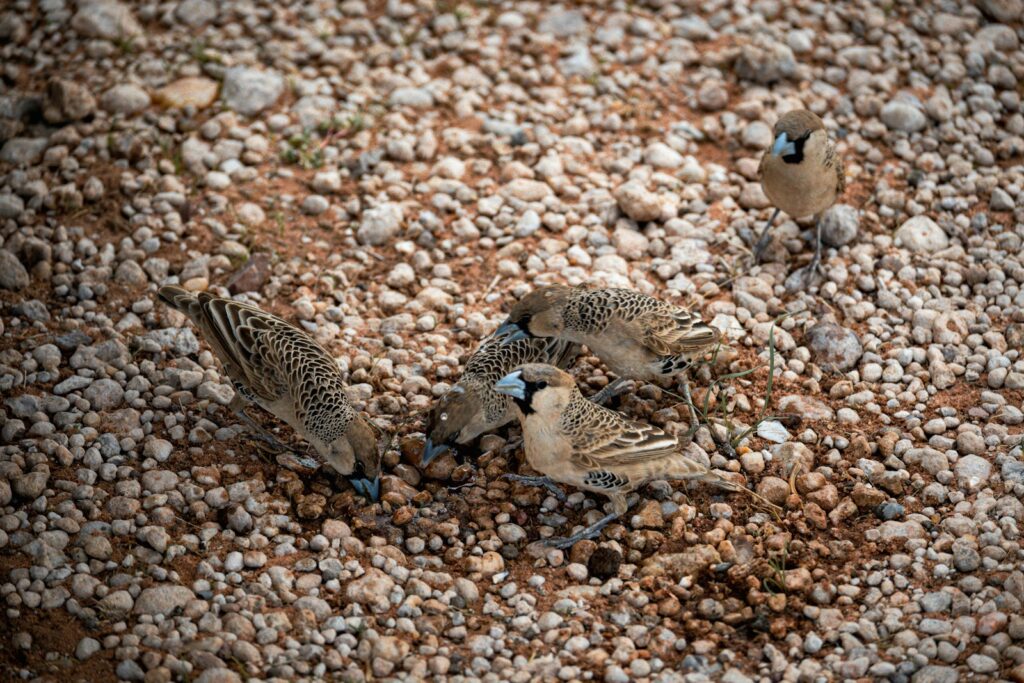
Sociable Weavers (Philetairus socius) create the largest bird-built structures on Earth—massive communal nests that can house over 100 breeding pairs and remain in continuous use for more than a century. These remarkable constructions, sometimes weighing several tons, feature multiple chambers with regulated temperatures that remain cool during scorching days and retain warmth during cold desert nights. The nests become living ecosystems themselves, with chambers often occupied by other species, including pygmy falcons, various small mammals, and even reptiles seeking shelter within the intricate structures. Social weavers demonstrate extraordinary cooperation, with colony members working together to maintain and expand their architectural marvels while collectively defending against predators and raising young in a highly structured social system that represents one of the most complex avian societies in the world.
The African Grey Hornbill’s Unique Nesting Behavior
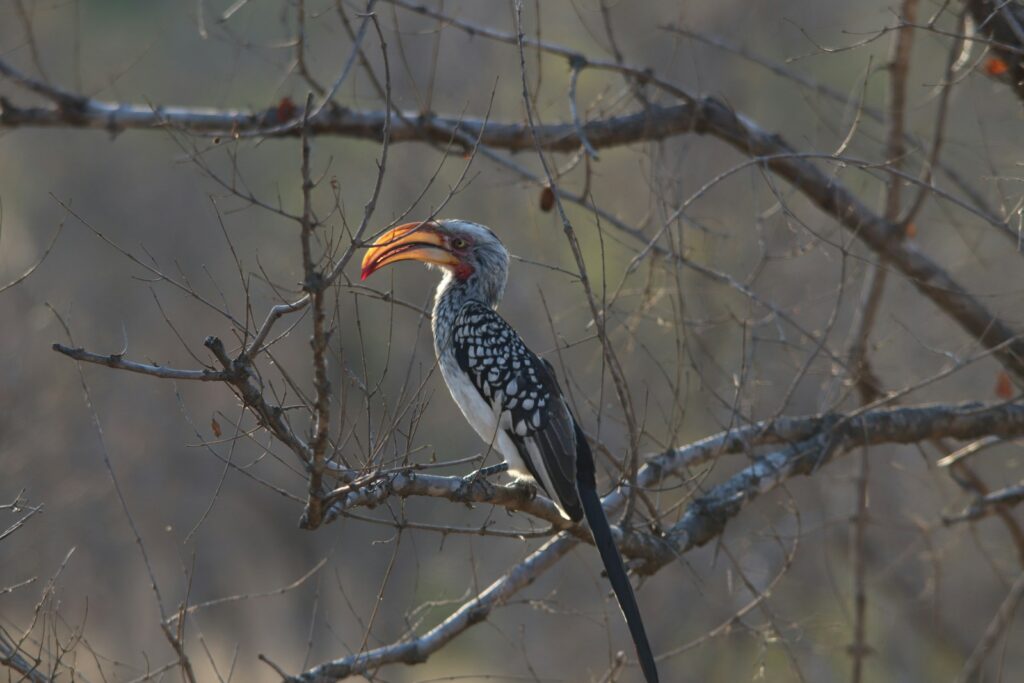
The African Grey Hornbill (Lophoceros nasutus) practices one of the most fascinating nesting behaviors in the avian world, with females sealing themselves inside tree cavities for the entire incubation and early nestling period. After entering a suitable tree hollow, the female uses a mixture of mud, food remains, and feces to narrow the entrance, leaving only a small slit through which the male feeds her and eventually the chicks. This remarkable strategy protects from predators during the vulnerable nesting period, though it comes with significant risks if the male should fail to return with food. During her confinement, which can last up to three months, the female undergoes a complete molt, replacing all her flight feathers while relying entirely on her mate for sustenance. Upon emergence, both parents continue feeding the growing chicks until they fledge and develop the foraging skills necessary for independence.
The Lilac-breasted Roller’s Spectacular Colors

The Lilac-breasted Roller (Coracias caudatus), often considered one of Africa’s most beautiful birds, displays a stunning palette of colors including lilac, turquoise, olive, and rufous that make it instantly recognizable across the savannah landscape. These medium-sized birds earn their name from their spectacular rolling flight displays during breeding season, when males perform complex aerial acrobatics involving rapid rolling and diving motions to impress potential mates. Perched prominently on exposed branches or power lines that offer commanding views of surrounding terrain, rollers scan for insects, small reptiles, and even scorpions, which they capture with swift, direct flights before returning to their vantage points. Despite their delicate appearance, Lilac-breasted Rollers demonstrate remarkable territorial aggression, readily confronting much larger birds that intrude on their breeding territories or hunting grounds.
The Marabou Stork: Africa’s Undertaker
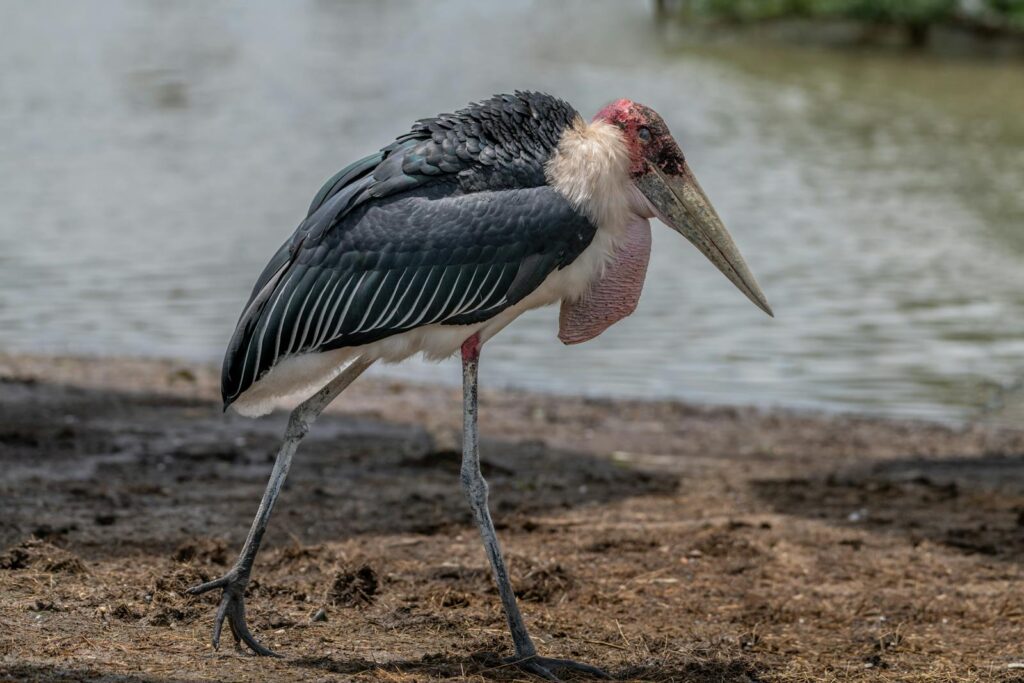
The Marabou Stork (Leptoptilos crumenifer), often called the “undertaker bird” due to its somber appearance and hunched posture, stands among the savannah’s most imposing avian residents with a wingspan that can exceed 10 feet. These massive scavengers possess distinctive features, including a bare, reddish head, enormous bill, and pendulous pink throat pouch that serves both as a visual display and as a temperature regulation mechanism in the hot African climate. Though unquestionably ugly by conventional standards, Marabous perform vital ecosystem services by efficiently disposing of carrion and waste that might otherwise spread disease across the savannah. With remarkable adaptability, these opportunistic feeders have expanded their traditional scavenging role to exploit human-modified environments, becoming common around fishing villages, slaughterhouses, and even urban garbage dumps throughout sub-Saharan Africa.
The Ground Hornbill’s Cooperative Society
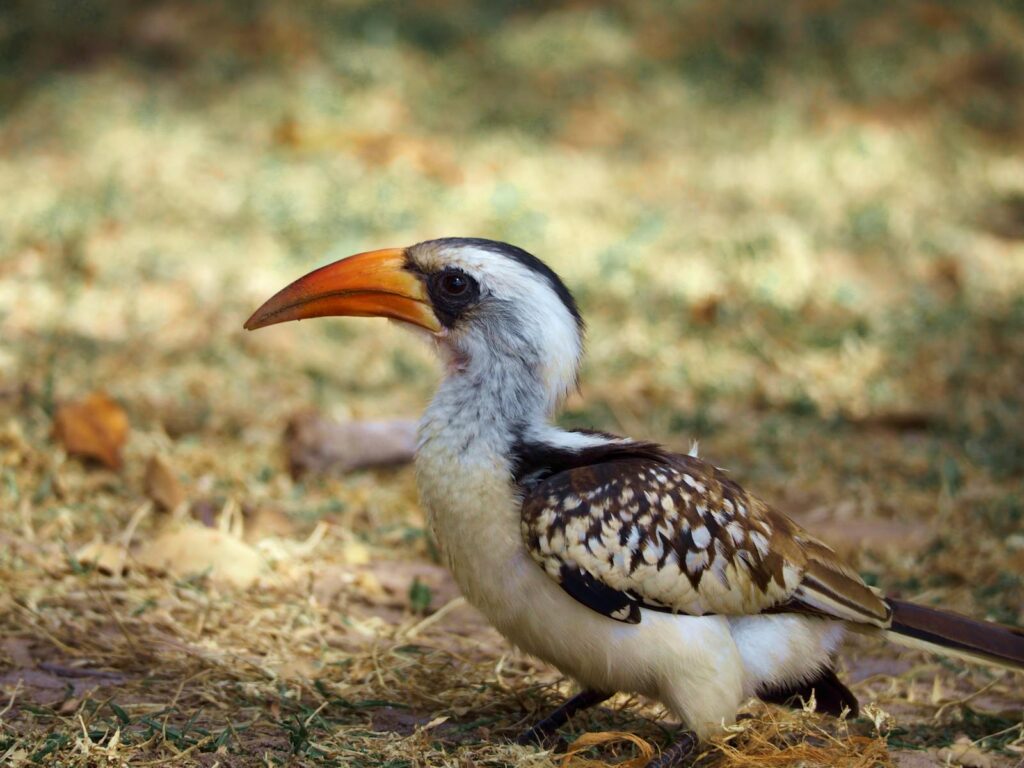
Southern Ground Hornbills (Bucorvus leadbeateri) live in highly structured family groups of 2-11 individuals that maintain and defend territories of up to 100 square kilometers in the African savannah. These large, turkey-sized birds with distinctive red facial skin and powerful bills depend on cooperative breeding systems where only the dominant pair reproduces while other group members help raise the young—a strategy essential for species that may take up to seven years to reach sexual maturity. Ground hornbills are primarily carnivorous, using their strong bills to capture prey including snakes, lizards, insects, and even small mammals and birds they encounter during methodical group foraging expeditions across their territory. With declining populations due to habitat loss and human persecution, ground hornbills have become conservation priorities, particularly given their unusually slow reproduction rate, where typically only one chick is raised successfully every three years, even under optimal conditions.
The Yellow-billed Oxpeckers: Nature’s Symbiotic Partners
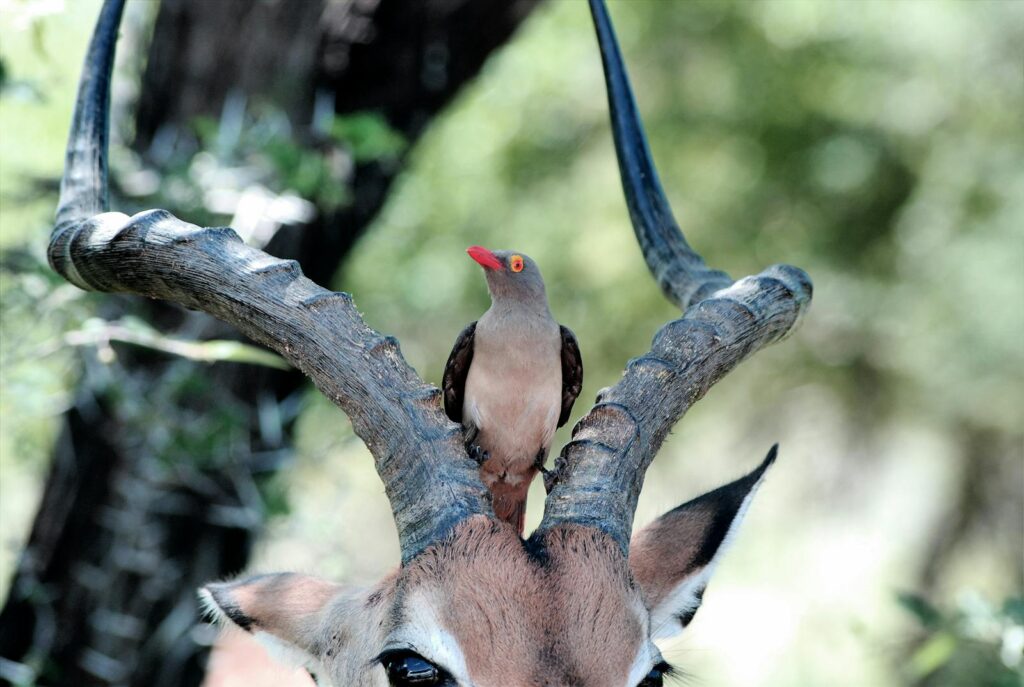
Yellow-billed Oxpeckers (Buphagus africanus) exemplify one of nature’s most fascinating symbiotic relationships as they perch on large mammals, including buffalo, rhinos, and giraffes, removing ticks and other parasites from their hosts. These specialized birds have evolved remarkable adaptations for their lifestyle, including strong claws that allow them to hang sideways or even upside-down on their hosts, and stiff tail feathers that provide additional support while feeding. The relationship between oxpeckers and their mammalian hosts remains complex and sometimes controversial, as the birds also consume blood from existing wounds, potentially preventing healing and causing a parasitic rather than mutualistic relationship in certain circumstances. Despite these complexities, large mammals hosting oxpeckers benefit from early warning systems, as these alert birds give distinctive alarm calls when detecting approaching predators or human hunters, creating a multi-faceted relationship that extends beyond simple grooming services.
The African Fish Eagle’s Haunting Call
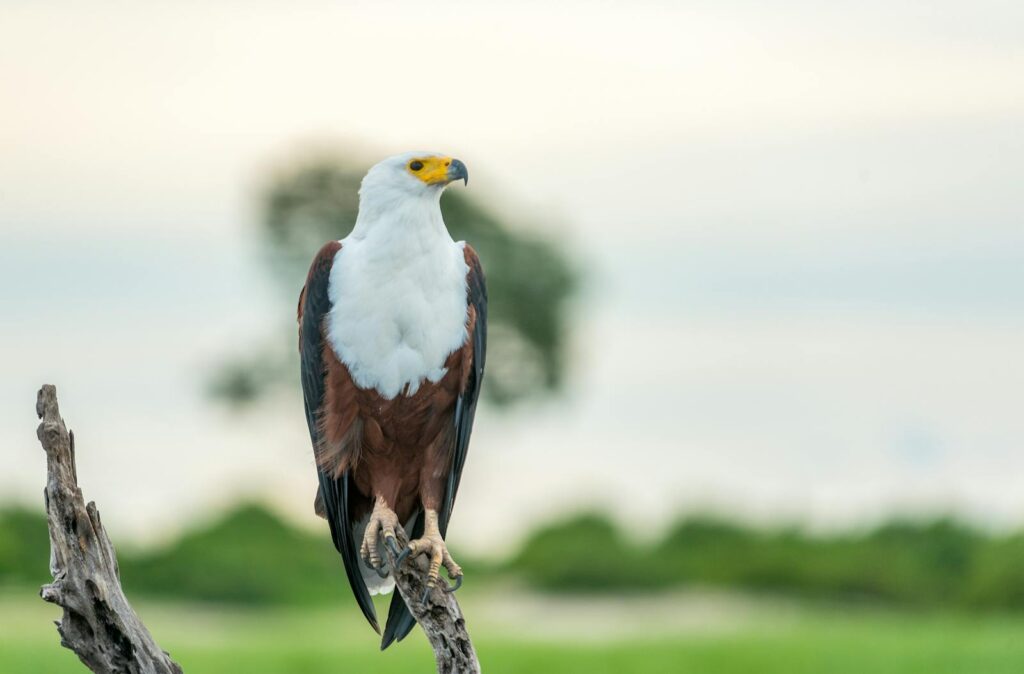
The African Fish Eagle (Haliaeetus vocifer), with its distinctive black, white, and chestnut plumage, serves as one of Africa’s most recognizable avian symbols and appears on several national flags and coats of arms. Their haunting, far-carrying call—a characteristic sound of Africa’s waterways often described as “the voice of Africa”—consists of a distinctive weee-ah, hyo-hyo, or a coowee-ah, coowee-ah sequence that echoes across lakes and rivers bordering savannah regions. These skilled hunters employ remarkable vision to spot fish from perches or while soaring, then execute precise dives to snatch prey from the water’s surface with specialized talons featuring small spikes and rough pads that help grip slippery fish. Unlike many eagles that maintain territories only during breeding season, African Fish Eagles typically establish permanent territories that both members of the pair actively defend year-round against neighboring eagles and other potential competitors.
The Martial Eagle: Apex Aerial Predator
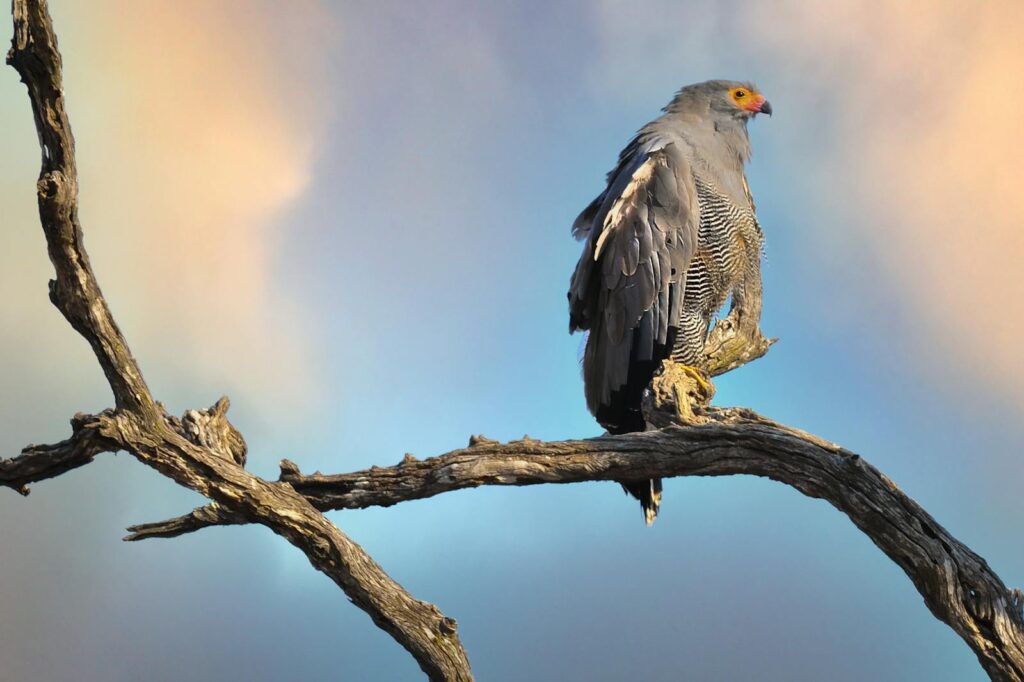
The Martial Eagle (Polemaetus bellicosus) reigns as Africa’s largest eagle and one of the savannah’s most powerful aerial predators, capable of taking prey up to six times its weight, including small antelopes, monkeys, and large birds. These impressive raptors possess exceptional eyesight, able to spot potential prey from up to 6 kilometers away while soaring at heights where they appear as mere specks to human observers below. With immense wingspans reaching over 2.6 meters (8.5 feet), Martial Eagles spend hours effortlessly riding thermal currents, conserving energy while surveying vast territories that can exceed 100 square kilometers for each breeding pair. Despite their formidable hunting prowess, these magnificent birds face serious conservation challenges, with population declines exceeding 60% in some regions due to habitat loss, persecution by farmers protecting livestock, and collisions with power lines in increasingly developed landscapes.
The Crowned Crane’s Elegant Presence

The Grey Crowned Crane (Balearica regulorum), adorned with its distinctive golden crown of feathers, represents one of Africa’s most elegant avian inhabitants and serves as Uganda’s national bird. Unlike most crane species that perform breeding displays primarily on the ground, crowned cranes incorporate elaborate aerial components into their courtship, leaping gracefully into the air with wings extended in synchronized dancing displays that rank among the most beautiful in the bird world. These adaptable birds occupy a unique ecological niche among cranes as the only members of their family able to roost in trees, using their specialized hind toe to grasp branches—a feature absent in other crane species. Though primarily associated with wetlands, crowned cranes regularly venture into adjacent savannah habitats to forage for a diverse diet of insects, reptiles, small mammals, and grain, making them important components of the transitional zones between grasslands and wetland ecosystems.
The Conservation Challenges Facing Savannah Birds
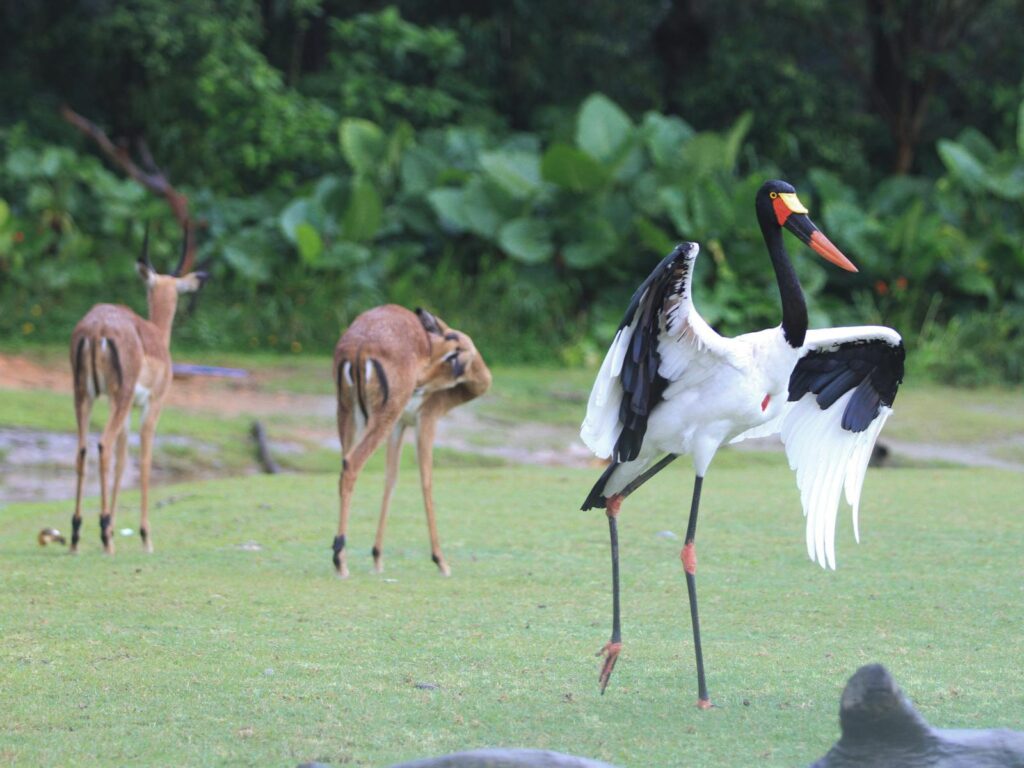
Africa’s savannah birds confront mounting threats from habitat conversion as grasslands are increasingly transformed into agricultural land, with some species losing over 50% of their historical range in the past century alone. Climate change poses additional challenges through altered rainfall patterns that affect food availability, breeding cycles, and the timing of seasonal movements for many species dependent on predictable environmental cues. The illegal wildlife trade targets certain iconic species like ground hornbills for traditional medicine and grey crowned cranes for the pet trade, further straining populations already under pressure from habitat loss. Conservation efforts increasingly focus on landscape-level protection strategies that maintain connectivity between protected areas while engaging local communities through sustainable livelihoods that incentivize habitat preservation, recognizing that the future of savannah birds ultimately depends on harmonizing human needs with ecological sustainability.
The African savannah’s avian inhabitants represent some of the most spectacular and specialized birds on Earth. From the secretary bird’s snake-stomping skills to the social weaver’s architectural genius, these species have evolved remarkable adaptations to thrive in demanding grassland environments. Their diverse roles—as predators, scavengers, pollinators, and seed dispersers—make them integral to savannah ecosystems. As climate change and human development continue to transform these landscapes, the conservation of these iconic birds becomes increasingly important not only for their intrinsic value but also for maintaining healthy, functioning savannah ecosystems. By understanding and appreciating these magnificent birds, we gain greater motivation to protect the irreplaceable habitats they call home, ensuring future generations can experience the thrill of seeing a secretary bird striding purposefully through golden grass or hearing the haunting call of a fish eagle echo across an African sunset.
